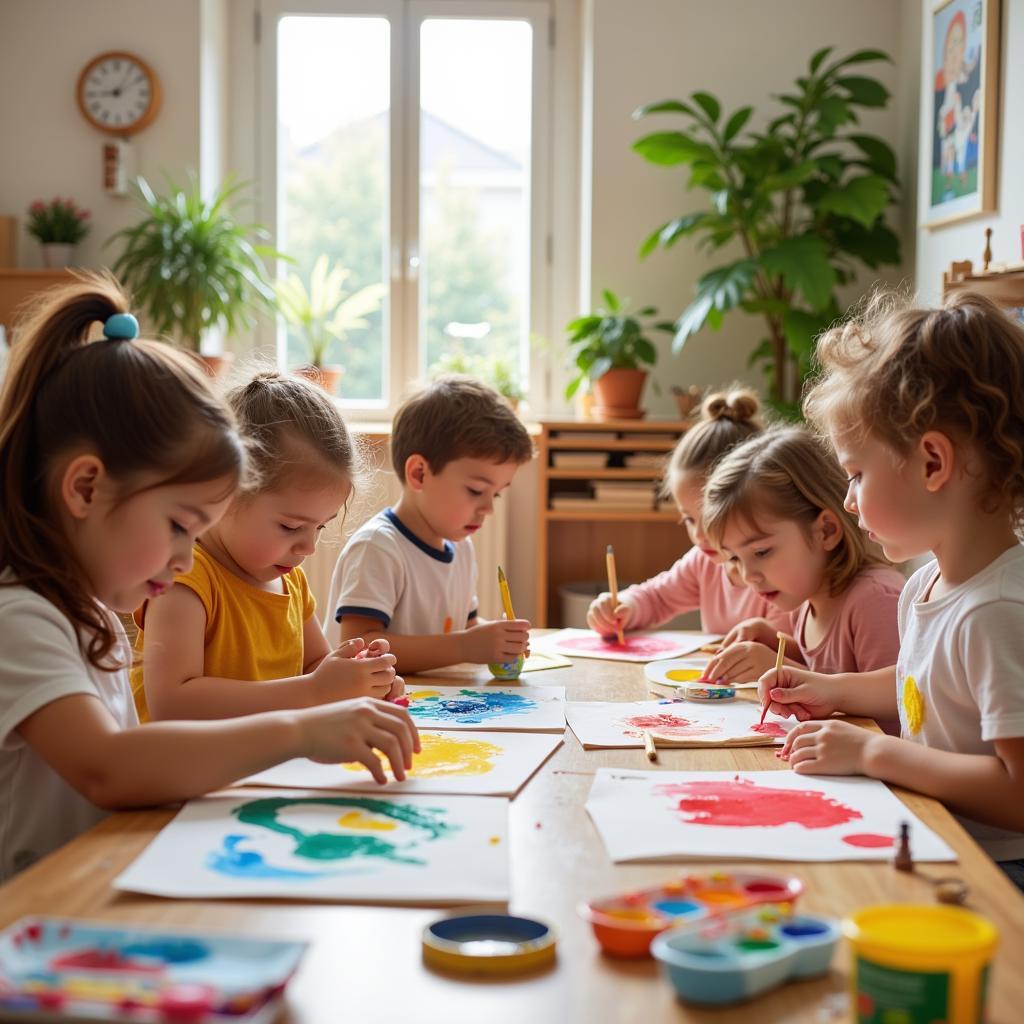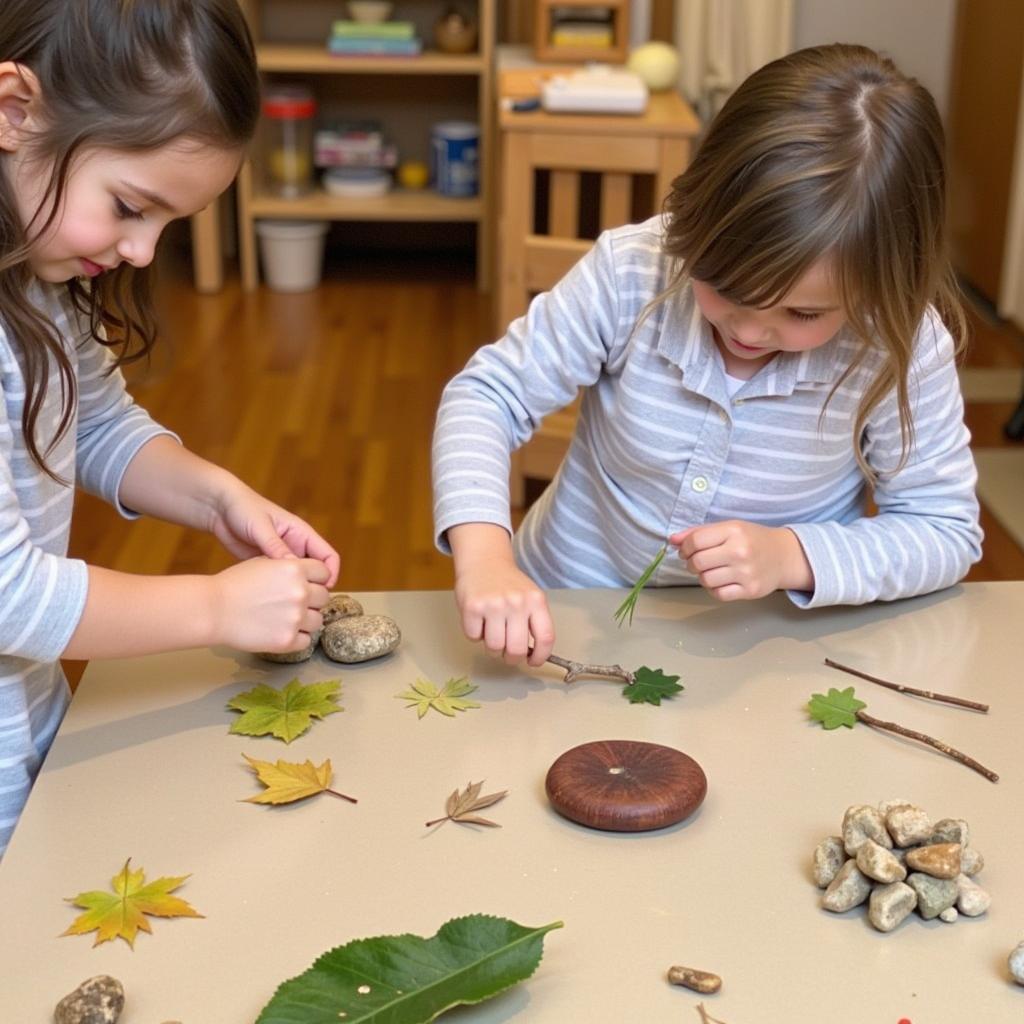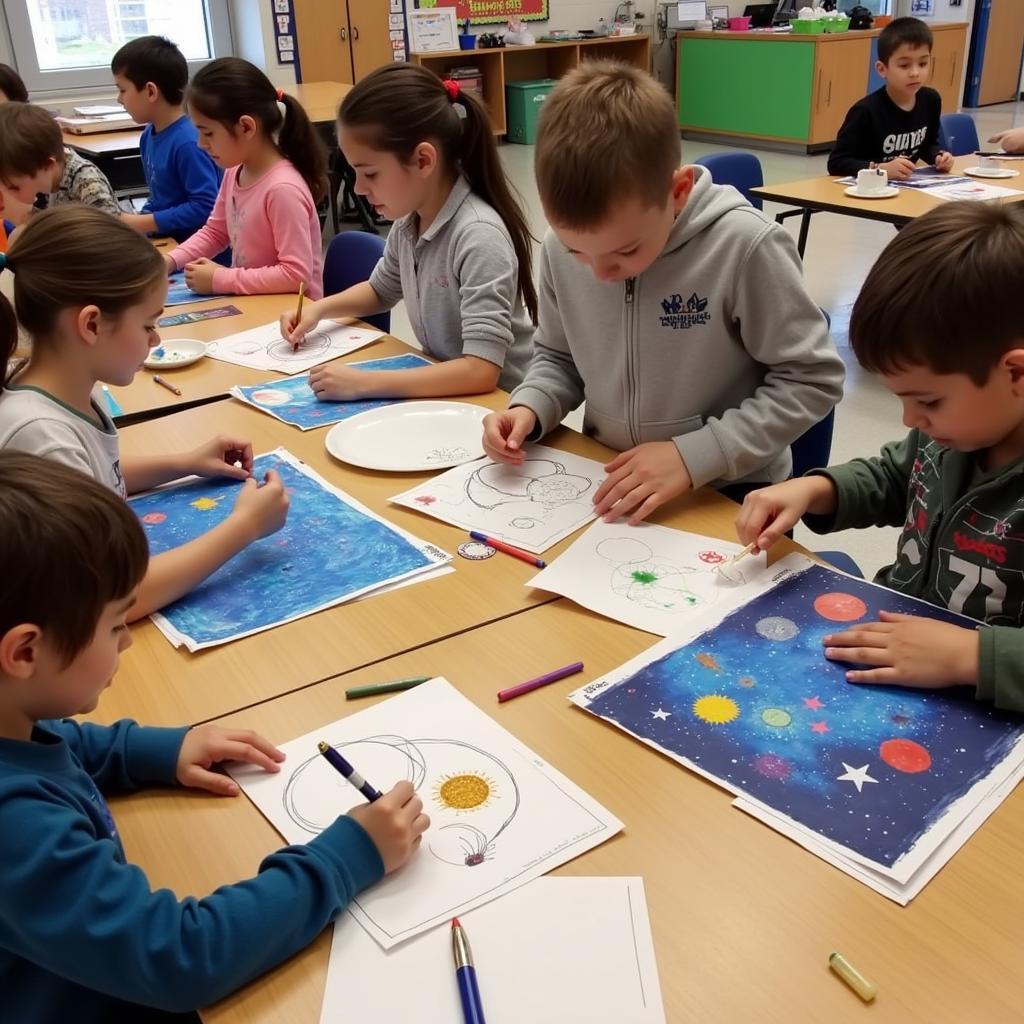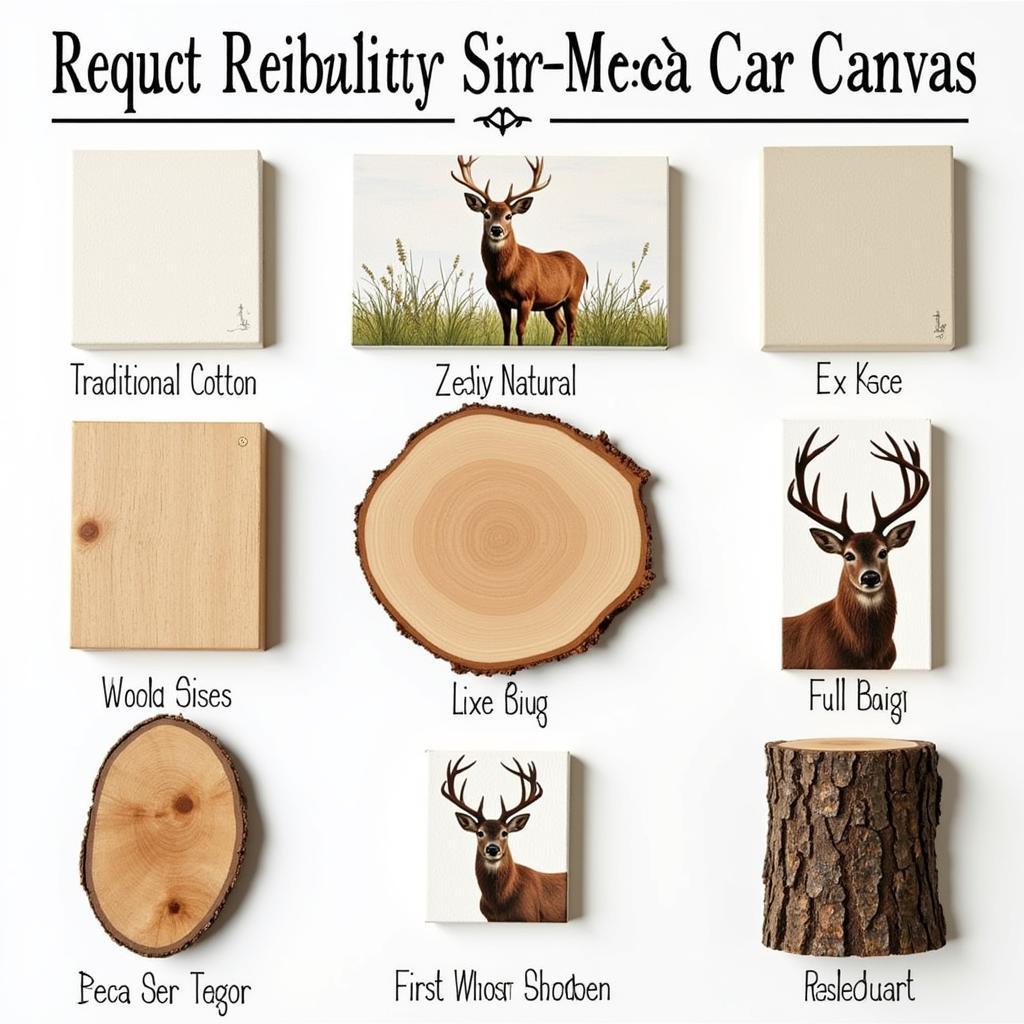Montessori and Art: Nurturing Creativity and Development
The intersection of Montessori And Art provides a rich landscape for children’s learning and development. This unique approach, emphasizing self-directed exploration and hands-on experiences, allows children to flourish as creative thinkers and confident individuals. Let’s delve into how the principles of Montessori enhance artistic expression and contribute to a holistic educational experience.
The Foundation of Freedom and Independence in Montessori Art
At the heart of the Montessori philosophy lies the belief in fostering a child’s natural curiosity and independence. This translates directly into the realm of art, where children are encouraged to make their own choices, experiment with various mediums, and develop their own artistic voice without limitations. Instead of prescribed instructions or pre-determined outcomes, children are empowered to explore their creativity at their own pace, guided by their interests and discoveries.
This freedom extends to the selection of materials as well. Montessori classrooms offer a diverse range of art supplies, thoughtfully presented and accessible to children. From paints and crayons to clay and natural materials, each element invites exploration and encourages children to experiment with different textures, colors, and forms.
 Children painting in a Montessori classroom
Children painting in a Montessori classroom
The Power of Sensory Experiences in Art Activities
Montessori education recognizes the importance of sensory exploration in a child’s development. Art provides a natural platform for engaging multiple senses simultaneously. The feel of cool, smooth clay, the vibrant hues of watercolor paints, the rhythmic strokes of a paintbrush – all contribute to a rich sensory experience that enhances learning and creativity.
These hands-on engagements with art materials go beyond mere entertainment. They help children develop fine motor skills, hand-eye coordination, and spatial awareness. The act of squeezing paint, manipulating clay, or controlling a crayon strengthens small muscles and refines hand movements, essential skills for writing, dressing, and other everyday tasks.
 Montessori art activity with natural materials
Montessori art activity with natural materials
Process Over Product: Celebrating the Journey of Creation
In a world often fixated on results, Montessori art embraces the journey of creation as much as the final product. Children are encouraged to explore, experiment, and express themselves without the pressure of achieving a predetermined outcome. Mistakes are seen as learning opportunities, fostering resilience and a growth mindset.
This emphasis on process over product encourages children to tap into their imagination, problem-solve, and develop their own unique artistic style. It allows them to experience the joy of creation for its own sake, free from judgment or comparison. This approach nurtures self-expression, boosts confidence, and fosters a lifelong love of learning.
Integrating Art Across the Montessori Curriculum
Art in a Montessori setting isn’t confined to a designated art class. Instead, it’s seamlessly integrated into various areas of the curriculum. Children might create artwork inspired by their studies in geography, history, or science, deepening their understanding of the subject matter while expressing their learning through art.
 Children creating artwork inspired by a science lesson
Children creating artwork inspired by a science lesson
This interdisciplinary approach demonstrates the interconnectedness of knowledge and fosters a holistic learning experience. It allows children to make connections, apply their knowledge in creative ways, and develop a deeper appreciation for both art and the subject matter it reflects.
The Lasting Benefits of Montessori and Art
The benefits of a Montessori-inspired approach to art extend far beyond childhood. By fostering creativity, independence, and a love of learning, it equips children with essential skills for success in all aspects of life. The ability to think critically, solve problems, adapt to new situations, and communicate effectively are all nurtured through art exploration in a Montessori environment.
Furthermore, the emphasis on process over product, experimentation, and self-expression fosters a growth mindset that encourages children to embrace challenges, learn from their mistakes, and persevere in the face of obstacles. These qualities are invaluable not just in the art studio, but in all areas of life, contributing to well-rounded, resilient, and successful individuals.
Conclusion
The fusion of Montessori and art creates a dynamic learning environment where creativity flourishes, and children are empowered to reach their full potential. By embracing the principles of freedom, independence, sensory exploration, and process-oriented learning, we can nurture a lifelong love of art and equip children with essential skills for success in all aspects of life.

